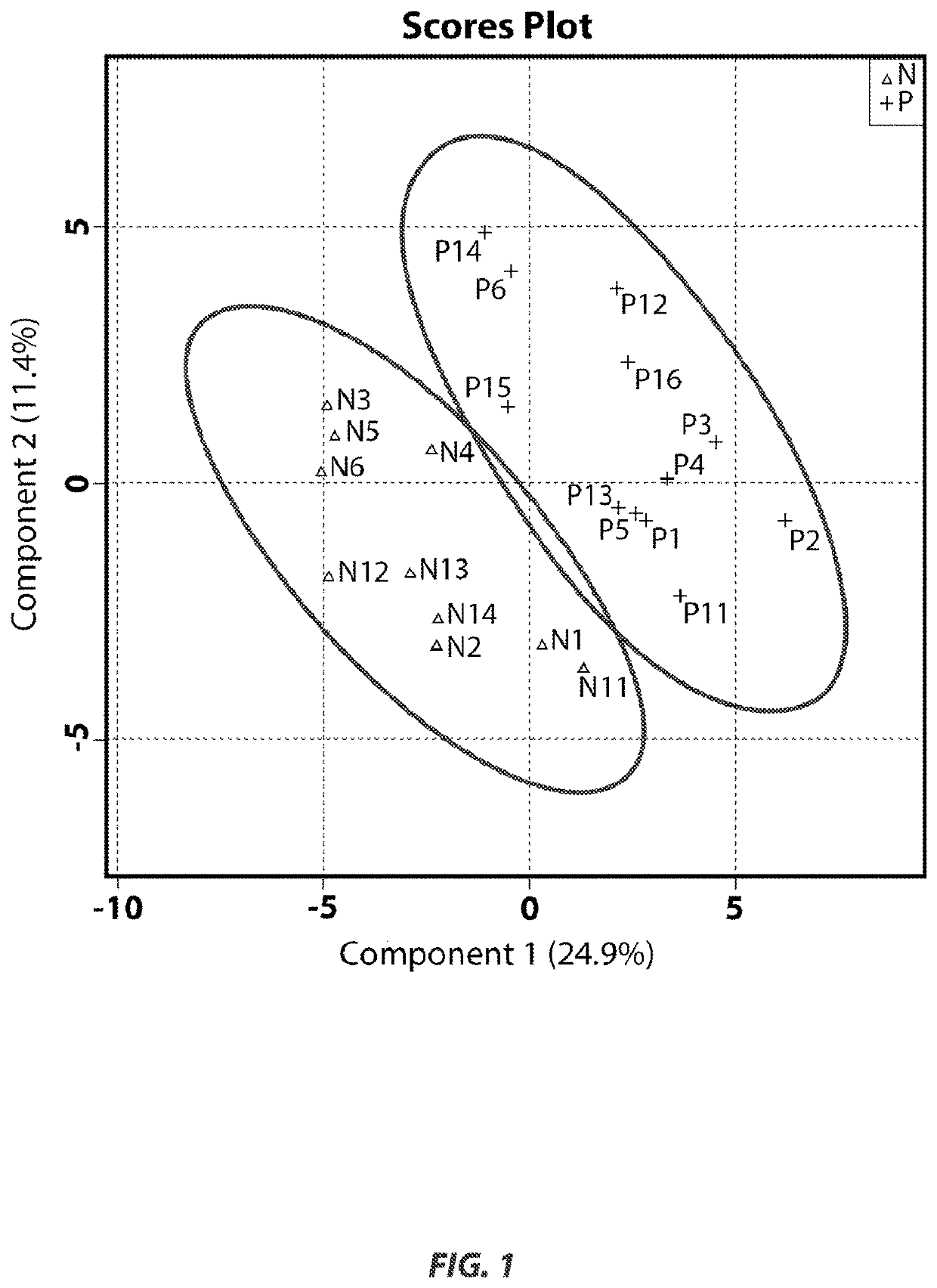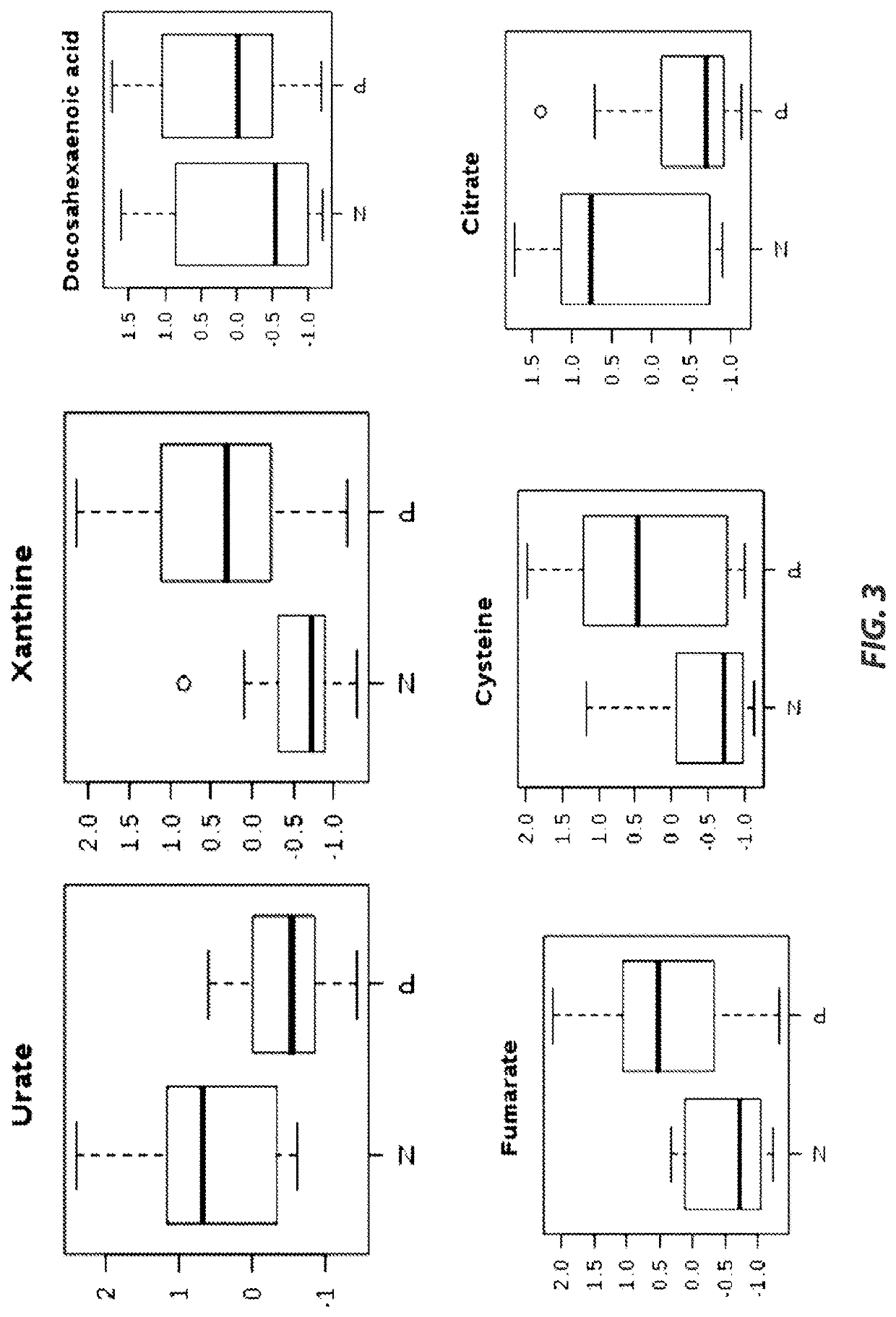Uterine endometrial fluid for prediction of success in fertility treatment
a fertility treatment and endometrial fluid technology, applied in the field of fertility treatment, can solve the problems of morphological evaluation failing to evaluate the two factors related to embryo viability, chromosomal integrity and embryo metabolism, and the selection of embryos based on morphological qualities is not precise, so as to enhance the pregnancy success rate of a fertility patien
- Summary
- Abstract
- Description
- Claims
- Application Information
AI Technical Summary
Benefits of technology
Problems solved by technology
Method used
Image
Examples
example 1
Endometrial Secretions 24 Hours Prior to Frozen Embryo Transfer is Predictive of Implantation Outcome
[0064]Objective: Successful implantation can be dependent on the intricate dialogue between a competent embryo and a receptive endometrium. On the maternal side, specific biological changes in adhesion need to occur for blastocyst attachment, while tight regulation of signaling pathways are crucial for the invading embryo. The objective of this study was to examine the uterine fluid milieu in association with implantation outcome 24 hours prior to, and at the time of euploid embryo transfer.
[0065]Materials and methods: Infertile patients (n=48) were recruited with IRB consent prior to an estradiol / progesterone replacement frozen embryo transfer (FET) with euploid blastocysts. Uterine secretions were collected by gentle aspiration (˜2-5 ul), either 24 h prior to, or at the time of FET. In brief, using the mock transfer protocol typically performed prior to an embryo transfer, the tip ...
example 2
Invasive Uterine Aspiration 24 Hours Ahead of Embryo Transfer Characterizes the Compromised RIF Uterine Microenvironment and is Predictive of Reproductive Outcome
[0073]Objective: Repeat implantation failure (RIF) is particularly challenging to treat, resulting in limited success, even when adequate preparation of the endometrium is established and a transfer is performed with a high grade euploid blastocyst. The objective of this study was to utilize a multidisciplinary approach to decipher the complexity of RIF through investigations of the maternal molecular components ahead of an embryo transfer.
[0074]Materials and Methods: Patients were recruited with IRB consent 24 hours prior to a programmed frozen embryo transfer (FET) with a euploid blastocyst. Uterine secretions were collected by gentle aspiration (˜2-50) under ultrasound guidance and grouped according to reproductive outcomes: Failed euploid FET (RIF patients, ≥3 prior IVF failures) and Positive live birth FET (maternally ...
PUM
| Property | Measurement | Unit |
|---|---|---|
| time | aaaaa | aaaaa |
| time | aaaaa | aaaaa |
| time | aaaaa | aaaaa |
Abstract
Description
Claims
Application Information
 Login to View More
Login to View More - R&D
- Intellectual Property
- Life Sciences
- Materials
- Tech Scout
- Unparalleled Data Quality
- Higher Quality Content
- 60% Fewer Hallucinations
Browse by: Latest US Patents, China's latest patents, Technical Efficacy Thesaurus, Application Domain, Technology Topic, Popular Technical Reports.
© 2025 PatSnap. All rights reserved.Legal|Privacy policy|Modern Slavery Act Transparency Statement|Sitemap|About US| Contact US: help@patsnap.com



